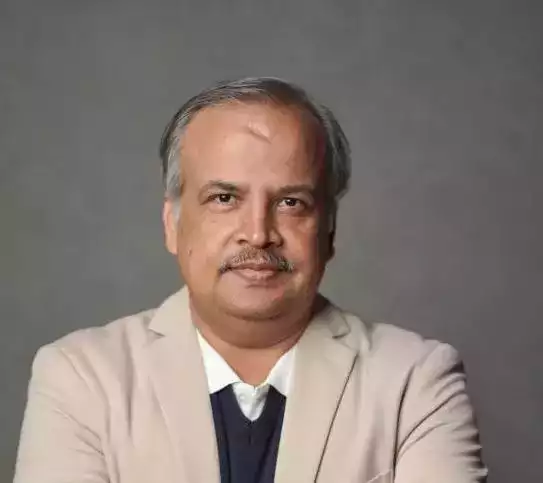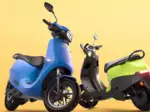Driving the future: Anand Kulkarni on how Tata Motors is revolutionising EV technology and user experience

New Delhi: Anand Kulkarni, Chief Products Officer at Tata Passenger Electric Mobility Ltd., envisions a transformative future for electric vehicles (EVs) through enhanced technology and connectivity. According to Kulkarni, key trends include improved battery management systems, refined Advanced Driver Assistance Systems (ADAS), and advanced IoT connectivity, all designed to enrich user experiences.
Tata Motors aims to make cutting-edge features accessible in mass-market models like the Punch and Nexon, appealing especially to tech-savvy consumers. Innovations such as the ZConnect system, Vehicle-to-Load (V2L) capabilities, and the Arcade.ev app suite further enhance convenience, safety, and in-car entertainment, with an aim to position Tata as a leader in the evolving e-mobility landscape.
Here are excerpts from ETAuto’s conversation with Anand Kulkarni, Chief Products Officer, Head of HV Programs and Customer Service, Tata Passenger Electric Mobility Ltd.
1. What future trends do you foresee in automotive technology that will further enhance the integration of smart features, connectivity, and user experience in EVs?
As the adoption of e-mobility grows and OEMs continue to receive feedback directly from the customers and their vehicles through telematics, the below trends will not just increase the scope improving the user experience in the vehicle, but even democratise various features across price points.
a. Better Battery Management Systems: With time, there will be improvements to the battery management systems being used in EVs to eke out increased efficiency from the pack, optimise battery performance, and improve overall safety of the vehicle
b. Advancements in ADAS: As more vehicles use ADAS on the road, OEMs will be able to fine-tune the sensitivity of various features like adaptive cruise control, autonomous emergency braking, and lane-keep assist, ensuring that they are well calibrated for Indian traffic conditions and not too intrusive for the user
c. Enhanced Connectivity: OEMs will be able to leverage IOT to their advantage, with growing penetration of 5G, to allow faster an reliable communication between the vehicle and its supporting infrastructure – this will result in improved infotainment systems, increased support for over-the-air updates amongst others
d. Increased Personalisation with UI and UX Displays: Increased support from artificial intelligence and machine learning will result in tailoring personalised individual experiences. Vehicles will learn about the users driving preferences, seat adjustments, infotainment settings, and climate control, amongst other settings, automatically.
2. How Tata Motors are bringing advanced tech features in mass cars like Punch and Nexon?
At Tata Motors, accessibility and relevance are central to our approach in offering the best-in-class features in our vehicles. We ensure that these features are made available to a wide audience by strategically integrating them into our mid-range to top-range vehicles, which cater to the maximum number of consumers.
We recognize the importance of catering to diverse consumer segments, including the Gen Z demographic, who are tech-savvy, possess the purchasing power and want to standout by owning a vehicle that is high on features. Hence, our New Forever philosophy guides us in designing cars that not only meet the current demands but also remain relevant and desirable over time.
3. How have advancements in digital infotainment systems and instrument clusters enhanced the driving experience, particularly in terms of connectivity and accessibility?
Modern infotainment systems and instrument clusters have evolved from the analogue times to being fully digitalised, offering multiple modes of information from the vehicle to the customer. They not only allow the customer opportunities to interact more with their vehicle, but also allow them various connectivity options, like, wireless phone mirroring through Apple CarPlay and Android Auto, which allows customers to user certain functions of their phone on the infotainment screen, or like in the case of the Curvv.ev, Nexon.ev, and the Punch.ev – customers can mirror the navigation screens of Apple Maps or Google Maps on their instrument cluster as well.
Digital instrument clusters provide customizable displays, allowing users to prioritize relevant information, such as speed, distance to empty, and navigation prompts. Furthermore, voice recognition technology available in various languages, enhances accessibility, enabling drivers to control various functions without taking their hands off the wheel.
Together, these advancements contribute to a more enjoyable, efficient, and safer driving experience.
4. Could you elaborate on the specific safety features such as iVBAC and LED lighting in Tata.ev vehicles? How do these technologies contribute to improving overall vehicle safety and performance?
When it comes to safety features, certainly, offerings like iVBAC and LED lights rank high in providing an added layer of protection inside the vehicle.
IVBAC or Intelligent Vacuum-less Boost and Active Control is usually found in luxury cars from many segments above. This device electronically control the brake pressure to blend regenerative and normal braking to achieve an optimal pedal feel, which remains consistent and bereft of vibrations under braking scenarios where the ABS is activated. Using this technology also reduces wear down of the brakes.
Talking about LEDs – using this technology helps with a brighter and focused illumination for the driver, improving visibility significantly compared to halogen bulbs. LEDs are also efficient when it comes to consuming power, while providing a longer lifespan – therefore making them easier to maintain and run on the vehicle.
It is technology offerings like these, which help us take a step ahead when it comes to providing the consumers a product that is value for their money, which serving their use case scenarios.
5. What are the key benefits of connected car technology, such as remote vehicle controls and real-time updates, for enhancing convenience and security for drivers?
Connected car technology offers numerous benefits – enhancing safety, convenience, and efficiency for the customer. This technology is a key cog in supporting features like remote diagnostics and over-the-air software updates, ensuring vehicles are always running efficiently without needing frequent trips to the service center. It also allows for the user to conveniently understand vital aspects about their vehicle at the touch of a button.
With all Tata EVs, we offer our ZConnect connected car technology as standard. While it offers over 48 different features, some of the convenient features are: car location tracking, real time charge status, remote diagnostics and remote operations like Lock/Unlock, Lights On/Off, Remote Horn, AC On/Off to pre-cool the cabin.
In addition to this, ZConnect also allows us to receive insights by monitoring the telematics from general running habits of our EVs from all our customers, which is then combined with algorithms that we are constantly working on to improve the overall efficiency of the batteries and pass on the benefit derived in the form of increased range through software updates.
6. Could you explain the applications and advantages of V2L and V2V connectivity in Tata.ev vehicles, especially in scenarios like off-grid power and emergency assistance?
V2L is a novel technology which essentially enables consumers to use their EV as a portable energy source. It brings multiple opportunities such usage in off grid conditions and also as a power back up. V2L can be used to power different consumer durable loads like those of a coffee vending machine, lighting a tent, charging laptops and phones, and charging electronics like drones, amongst others.
Both, V2V and V2L have opened opportunities for users to do what was never thought of. One of our users shared that they visited their village to attend a wedding, where songs were being played on external speakers – due to a sudden power cut, the music had to be stop, and at that moment, he thought of using the V2L function, to power the speakers and play the music.
Currently, we see the use of this technology come in handy in situations like these. Apart from social situations like the above, customers can also use this technology to charge their e-bikes. Furthermore, through the 45W USB C Fast charger ports inside the vehicle, customers can charge their laptops, cameras, phones in no time.
When it comes to off-grid applications, the concept of vehicle to grid is a concept that aligns with the growing interest in renewable energy and the need for flexible energy storage solutions. However, we aren’t offering the same in our vehicles at the moment.
7. How does the integration of the Arcade.ev app suite and JBL AudioworX system enhance the in-car entertainment experience in Tata.ev vehicles?
India's first infotainment app suite, Arcade.ev, offers over 15+ applications including YouTube, Prime Video, Hotstar, and games, to further enrich the customer’s in-car experience. It enables one to stream latest movies and sitcoms from top OTT platforms, amongst other features. This auditory experience is complemented by the JBL AudioworX platform, which combines 9 speakers and a sub-woofer with multiple audio modes to bring together the cinematic experience in the Curvv.ev, Nexon.ev, and the Punch.ev.
To learn more about the electric vehicle ecosystem and meet the key industry leaders, click here.

